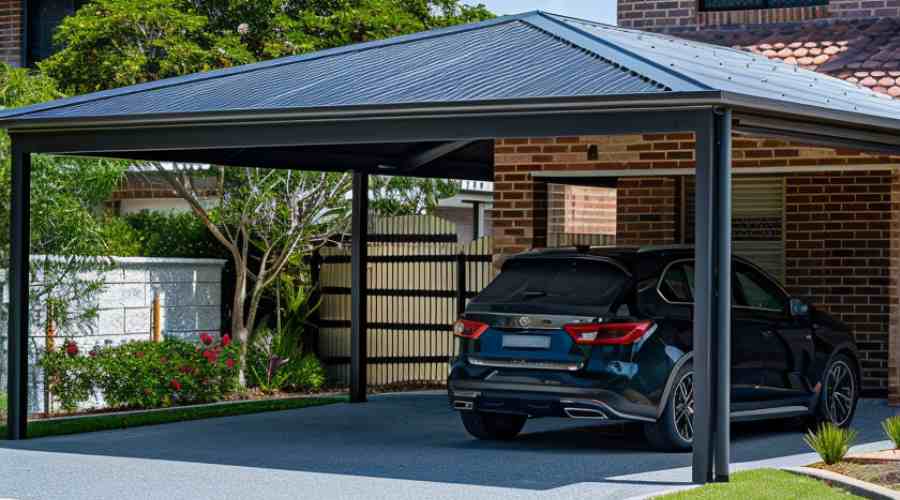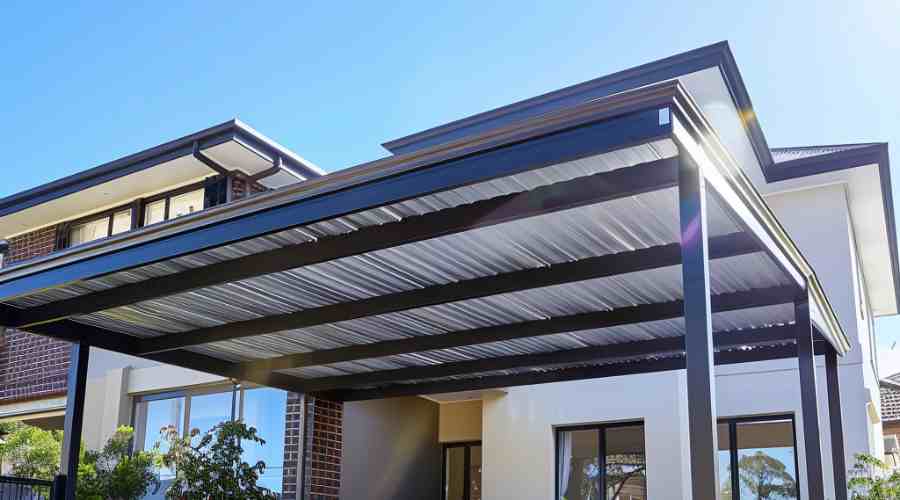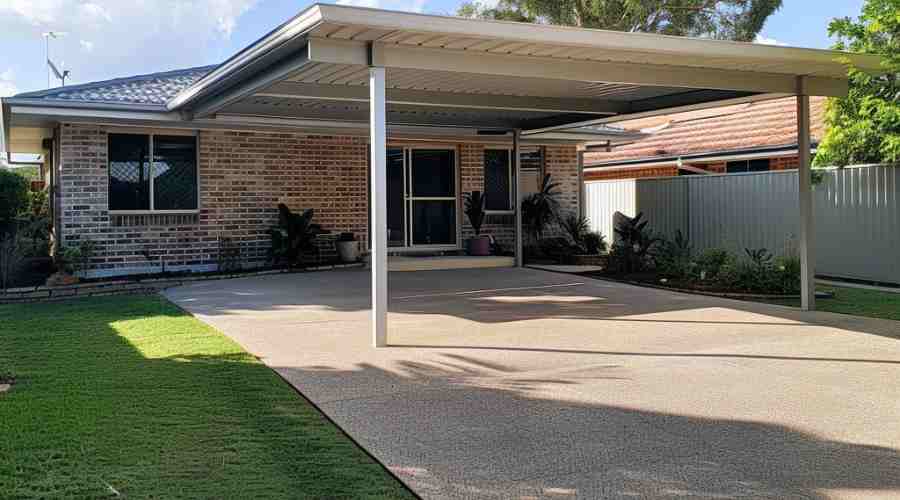How To Maintain Your Carport
Tips For Maintaining Your Carport
A carport lets you park your car outside without it getting ruined by the harsh weather conditions. But you still need to do some regular maintenance on your carport to keep it working right. Doing this saves you money over time and makes your carport last longer.
Why Carport Maintenance Matters?
Here’s why you should make carport maintenance a normal routine:
- Stops Big Fixes Later – Catching small issues now means you avoid major repairs down the road if things get worse. Water damage especially can require huge fixes if not handled early.
- Makes It Last Longer – Checking on your carport every few months, cleaning it, and fixing little things means you’ll get more years of use before needing a new one. You get your money’s worth.
- Guards Your Stuff – A well cared for carport keeps rain, snow, falling sticks and leaves off your car, ATV, tools, etc stored underneath. This protects your things from getting damaged.
- Looks Better, Helps Sale Value – A clean carport shows pride in your home’s upkeep. Later when you sell your house, a carport that’s still in good shape looks attractive to buyers.
So while it takes a little work, keeping after your carport pays off! Your car stays safer from weather hurting it. The tips here make the job easy.
1. Keep The Space Under Your Carport Clean
- Clear out things you’re not using for storage like ladders, bikes, boxes, etc. Too much stuff just attracts pests and makes it harder to see issues needing fixed.
- Often sweep away fallen leaves, dirt, etc so they don’t pile up. This also sweeps away grit that can lead to water puddles.
- Check the roof every couple months and clear off any stuck pine needles, leaves, blossoms, etc. Clogged drains can cause water to pool up there.
- Once a year, wash the floor using your garden hose and a broom. This scrubs off stains from drips, bird poop and tire marks. Concrete floor cleaner helps here too.
Keeping the space clean makes it safer to walk on and lets you better see any problems.
2. Check For Damage Every So Often
- Carefully check for signs of rust, cracks, bending, etc on the metal roof parts, bolts, and supports once a year. Also check after big storms.
- Make sure the roof panels and rain gutters aren’t bent in ways that let water leak through. Clear out anything clogging the water drainage.
- Check the slab concrete for major cracks opening wider over time and pits – these need patched before getting worse.
- Inspect weather stripping on the garage door, windows etc. Replace any getting too worn to keep rain/snow out. Oil the rollers and hinges.
- Closely watch any enclosed storage areas for leaks, musty smells or dampness getting in. Electronics, gear and upholstery stored there can get ruined.
Checking over things every 6-12 months means you catch small issues before repairs get really expensive. And keeps your cars and stuff protected.
3. Make Easy Fixes Quickly
Don’t wait long to fix small things you find while checking your carport:
Sand Off Rust Spots
- Lightly sand rusty spots to get rid of cracking/flaky parts down to more solid metal then wipe clean.
- Spray on rust stopping primer, then topcoat with touch up paint to match. Let dry fully.
Fill Cracks In Concrete
- Use concrete patch filler for minor cracks and shallow damaged spots in the slab. Let it dry completely before parking on it.
- Big cracks or chunks missing may need a concrete pro’s help to properly repair the slab and keep it level.
Stop Leaks
- Caulk gaps in joints/flashings allowing water in with silicone or rubber sealant.
- Replace any damaged, warped or ill-fitting roof panels, rain gutters etc allowing leaks.
- Fill small holes with seam tape. Large holes need metal patches welded over the weak spot.
4. Add Walls and Insulation If Needed
If you live with temperature extremes or heavy snow, adding walls and insulation makes your carport more like a protected garage. This shields vehicles from sun damage, rust, mildew smells and keeps interior temps more steady in cold weather so windows don’t frost up as much.
Frame New Walls
Build walls using exterior materials over rigid foam boards rated R13 insulation value at least. In northern regions with more extreme winters add layers of fiberglass batts between wall studs for maximum insulation.
Properly flash then seal up any gaps between the new walls and existing roof. Extend rain gutters if possible or add new ones.
Control Inside Temps
For regular garage use, add a temperature-controlled exhaust fan, electric heating and AC systems. This keeps conditions stable and saves energy by limiting outside air getting in uncontrolled.
5. Guide Water Flow Away
Since carports get lots of rain and snow pay close attention to drainage off the roof and surrounding slab:
- Check the carport roof slope carries most water to the front to drain off, not against a side wall.
- Keep rain gutters cleared so water empties out properly and doesn’t pool around the slab.
- Fill any low spots around the slab perimeter so rain runs off downhill.
- Use downspout extensions, pipes, gravel beds etc to channel roof drainage away to approved areas. Check local codes.
- After storms sweep standing puddles off the roof and floor before they seep places and cause damage.
Getting drainage right keeps your slab foundation and carport structure solid for many more years.
PRO TIP: Annual Pressure Washing
Using a rented pressure washer once a year makes keeping your carport clean so much easier. Blast away stuck on grime, stains and chalky areas from roof and floor surfaces. It saves tons of scrubbing by hand! Just allow things to dry fully afterwards before parking again.
FAQ – Common Carport Care Questions
How often should I check for issues needing fixed?
Check your carport thoroughly at least twice a year, plus after big storms. This way you spot problems while still small and fix them before causing bigger damage.
What basic tools will I need?
Have on hand a sturdy ladder, broom, hose nozzle, basic hand/power tools, sandpaper, caulk gun, concrete patch mix, suitable primer/paints for metal, and cordless drill. Rent a pressure washer periodically for deeper cleanings.
About how long should my carport reasonably last?
With proper routine care you should expect 25-30 good years before needing very major repairs or full structure replacement. Maintenance keeps your carport at its engineered strength longer.
What serious warning signs should I watch for?
Major issues needing immediate fixes – 1) Inside leaks from driving rain 2) Expanding rust holes 3) Concrete cracks over 1/4 inch wide 4) Sagging roof supports 5) Any loose/broken bolts or fasteners.
Should I enclose my carport? What should I consider?
Adding walls provides much better weather protection but also costs more in work and materials to fully seal up. Key things to think about are your local weather, needs for insulation/climate control, budget, usage plans and local permit laws. Even enclosing just part of the perimeter can help while allowing some airflow.
Weigh expected costs against how much you plan to use the space and level of weather protection needed in your climate. Strict parking only may just need partial enclosure. Fully outfitting & conditioning the enclosure for frequent use as a hobby shop for example takes more investment.
Conclusion
While a basic carport protects cars from complete weather exposure, it still faces elements that can shorten its usable life. Staying on top of simple maintenance saves you much bigger repair bills down the road.
Handling drainage, early rust, leaks, sweeping debris and regular cleaning takes little effort but pays off for many years supported by that effort. Don’t neglect the roof over your head! Use these carport care tips to keep it working great for the long run.



